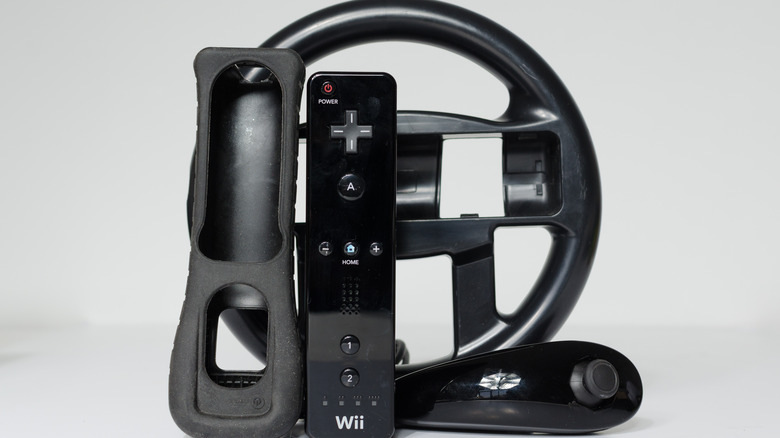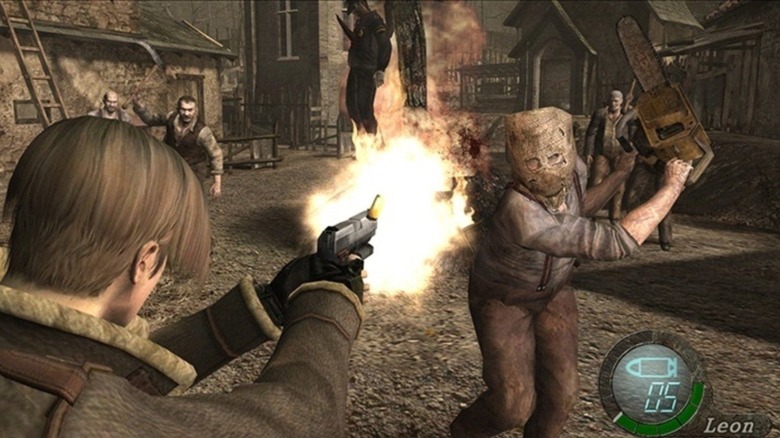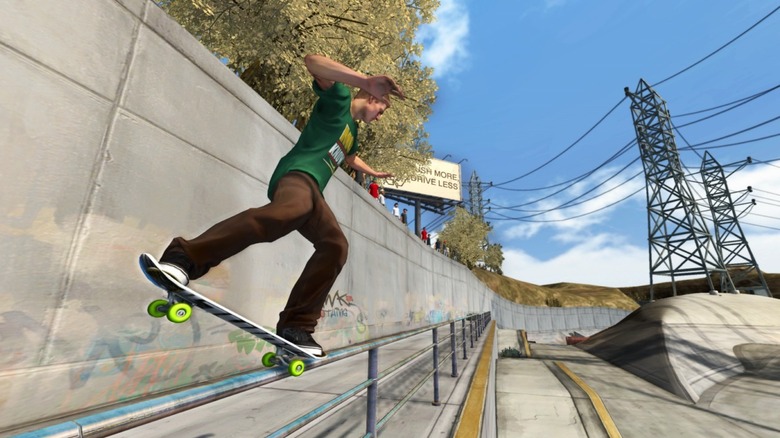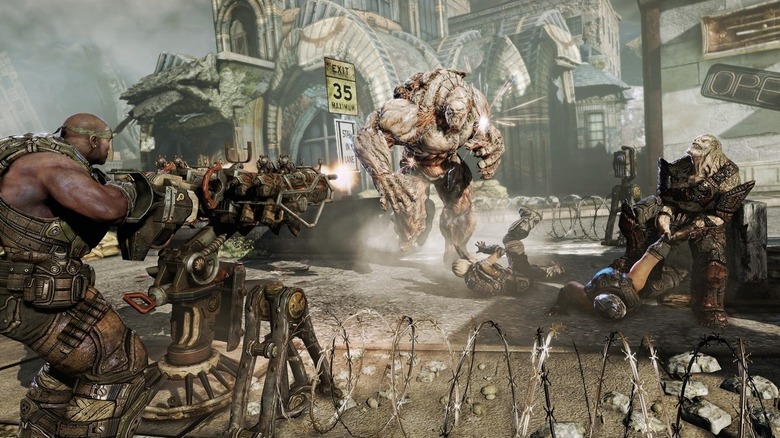Peripherals That Ruined Great Games
There are few things worse than a good video game getting ruined by a poorly implemented accessory. Though the majority of games exist on their own without the need for any additional peripherals, every once in a while a title comes along that tries to ramp up immersion by adding a real-world utensil that's supposed to increase enjoyment of the game. While some video games have managed to do just that — like the infamous "Dance Dance Revolution" at-home dance mat, the "Guitar Hero" guitar controller, or even the "Mario Kart" Wiimote wheel — these are far and few between. Like the bizarre NES accessory, the Rock N' Rolla, many video game peripherals are destined to be forgotten.
Often, a games' spotlighted accessory does little more than present players with a new set of uncomfortable problems and ruin what might actually be a great game without the extra add-on. In the worst cases, the game is built around using the half-baked accessory, while in others the item is a suggested option that ends up compromising the total experience. Here are four terrible gaming peripherals that ruined their games.
Hey You Pikachu's Microphone
Players may fondly remember spending time with Nintendo's N64 console, but only die-hard Pokémon fans are likely to have memories of the maligned 1998 title "Hey You, Pikachu" — and they're likely filled with frustration. While the game amounted to little more than a Pokémon-themed pet sim, it did have one unique selling point. "Hey You, Pikachu" was built around voice interaction using the N64's Voice Recognition Unit (VRU). This then-neat technology allowed players to talk to Pikachu through their N64 controller, with the yellow mascot recognizing speech via a 265-word database.
In theory, that's all well and good, but the reality was that Pikachu turned out to not be such a great listener. Among other complaints of repetitive and tedious gameplay, it seems the voice recognition software in "Hey You, Pikachu" isn't anything to write home about. Players have claimed Pikachu's reactions to their speech is random at best, unresponsive at worst. Fans now know why Pikachu ignored players in "Hey You, Pikachu:" the microphone was garbage. Adding insult to injury, "Hey You, Pikachu" had to be played using voice control, so there weren't alternatives for players that wanted to play the game without experiencing the pioneering-age of voice recognition technology.
Resident Evil 4's Chainsaw Controller
Few will dispute that "Resident Evil 4" is a good game. Though it remains a divisive point in the franchise among fans — seen as the turning point for when "Resident Evil" games became more action-centric — players can't get enough of Leon Kennedy's escapades through a remote Las Plagas-infested village in Spain. Even as recently as October, the classic "Resident Evil" game crept to VR and is now reaching a whole new expanse of players on different platforms. Yet despite all this praise, there was once a time when "Resident Evil 4" messed up big-time.
Riding off the popularity of the title's terrifying "Chainsaw Man" enemy, the Chainsaw Controller offered players a chance to play through "Resident Evil 4" using the iconic tool of Leon's death. While there's no question that the cool-looking controller was a treat for collectors, actually playing games with it proved more challenging than the enemies who wield the weapon. Between the awkward way players had to hold the controller to the less-than-ideal placement of analog sticks and buttons, the "Resident Evil 4" Chainsaw Controller made the great horror title an uncomfortable chore to play. It may have even made the game scarier to some, as they struggled to control Leon performing even the most simple of tasks.
Tony Hawk: RIDE's Skateboard
Players have had the recent luxury of being able to experience some of the best of skateboarding games with the remastered versions of two classics. "Tony Hawk's Pro Skater 1 + 2" collects all of the series' highs without forcing players to trudge through the other less-than-stellar entries in the franchise. While Tony Hawk's title's would reign unchallenged for a time, eventually a combination of stagnation brought on by years of product fatigue and competition from rivals like "Skate" led to a period of questionable "Tony Hawk" games.
By 2009, developer Robomodo had taken the reigns on "Tony Hawk" development from Neversoft and sought to do something different with the franchise. Trying to capitalize on what was then perceived as an interest to all gamers, Robomodo made a "Tony Hawk" game that used a skateboard controller akin to how "Guitar Hero" used its plastic guitar controllers. The results weren't great. Players reported controlling the in-game character was spotty at best, making expending actual physical energy all the more frustrating when the game registered movements incorrectly.
Would "Tony Hawk: RIDE" have been a better game without its skateboard controller? Probably not, but given that players were unable to play the game without the purchase of the expensive accessory, the world will never know.
Gears Of War 3's Throat Communicator
In its prime, there was nothing quite like multiplayer matches of "Gears of War." In a time where competitive multiplayer was still being perfected on consoles, the "Gears of War" series showed up and the industry took notice. The franchise's third-person, visceral multiplayer would spawn no shortage of imitations, even leaving its mark on Sony heavy-hitters like the acclaimed "Uncharted" games. By the time Epic Games released "Gears of War 3" players thought they knew what the title's multiplayer had in store for them — but they didn't realize the official microphone for the game was about to sour their experience.
Mad Catz made a special "Gears of War 3" themed throat communicator to coincide with the game's release, but players were better off using nearly anything else. The idea behind a throat communicator is to take pressure off of one's head by having a microphone rest around the neck like a necklace. When they're made correctly, it can offer users the same experience with the potential for increased comfort during prolonged use. Thankfully the "Gears of War 3" throat communicator succeeded in being comfortable, but it completely failed as a communication device. Players widely reported their teammates either couldn't understand them or even worse, they could hear all the noises of a player's throat, including their pulse. Few things can ruin a multiplayer match faster than not being able to make out what someone's saying, or being able to hear way too much.





